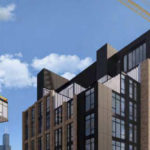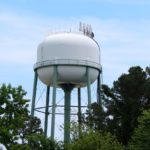Main Takeaways From the 2022 Title 24 Update

Per the three-year mandate, the California Energy Commission (CEC) has proposed the new 2022 update to the state building code. This code, otherwise known as Title 24, creates the minimum energy requirements for new construction on buildings. Title 24 is meant to aid in energy conservation and green design, enacting restrictions to help climate change and move construction and architecture into a more energy-efficient form. This code applies to all buildings, not just ones built by the state, which makes it pertinent for contractors, architects, and more to understand what changes are being made to the Title 24 code.
Limit On Gas Appliances
Starting in 2022, at least one appliance for heating in new California homes and buildings must be powered by electricity. To meet the code, most contractors would possibly use a high-efficiency heat pump rather than a gas appliance, which falls short of an all-electric construction that some activists have been pushing.
Ventilation Standards for Gas Stoves
Ventilation for gas stoves will be increased as the growing concern for the health dangers of burning gas indoors increases. This matches the Biden administration’s target for eliminating climate pollution by fifty percent by 2030. That measure requires all new construction across the nation to be all-electric by 2025. Another perk of this is that buildings without gas produces high-cost savings for developers and residents.
Nonresidential Steam Trap Monitoring
In new construction, there must be a piece of mandatory automatic monitoring equipment available. This change impacts industries using steam traps such as oil and gas producers, food processing, hospitals, and universities. The proposed site installation limits are intended to trigger the code for sites that will be installing a significant number of steam taps and thereby generate significant savings potential while allowing the smalls units to operate using manual inspection and monitoring methods that are more suited to their specific usage groups.
Controlled Environment Horticulture
Indoor agriculture is a booming business, especially with the budding cannabis industry taking over states like California, Arizona, and Michigan. With that in mind, the Statewide CASE Team proposes to evaluate indoor horticulture measures for inclusion in the 2022 update cycle. The suggested addition aims to save energy and water while still allowing farmers and growers to produce quality production in non-stacked and stacked indoor farms. The plant growth requirements that are being recommended are for the following crops: cannabis, microgreens, tomatoes, lettuce, basil, vegetable transplants, and roses.
Nonresidential Refrigeration System Opportunities
Refrigeration systems serving refrigerated warehouses and retail spaces with walk-in coolers or freezers are being called into question with mandatory efficiency requirements. This update would improve energy performance and reduce greenhouse gas (GHG) emissions from refrigeration systems in refrigerated warehouses, retail stores, and commercial kitchens. Any person in the restaurant or food industry will want to do further research on this code change.
Nonresidential Outdoor Lighting Sources
Three sub measures will be impacted in this new code change: nonresidential lighting zone reclassification, nonresidential lighting power allowances for parking lots, and multifamily outdoor lighting power allowances. The cause of this change is the new industry standards employed across the North American territory and California has not yet caught up with those standards. Since California lighting zones are dictated based on the U.S. Census, some areas have been overlit throughout the state.
Nonresidential Indoor Lighting Sources
This new mandate will shut-off controls for large offices, allowing a single occupancy sensor controlling the area in a 1,000 to 2,000 sqft office, with multiple occupancy sensors jointly controlling an area in an office larger than 5,000 sqft. This will help with offices that are needlessly lit when occupants are away from their desks frequently, wasting energy and costs. Occupants staying after hours may, however, have to walk to a manual control switch to enable override control.
Nonresidential Computer Room Efficiency
The proposed code changes apply to computer rooms that have a design information technology equipment (ITE)3 load over 20 Watts per square foot (W/ft2) as defined by the 2022 Title 24 update. All the prescriptive requirements would have associated updates to the compliance software. No update to the compliance software is required for the proposed new mandatory requirement.
For more information on the 2022 Title 24 changes, check out: the Title 24 Stakeholders website or give us a call at either our Beverly Hills office (310.663.2365) or San Francisco office (415.671.5270).




